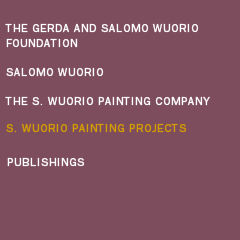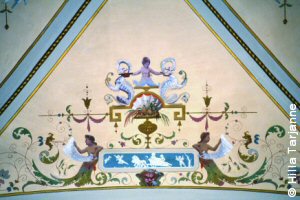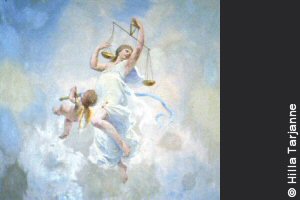

|
|
  | |
| The House of the Estates at Snellmaninkatu 9-11 | |
The construction of the House of the Estates, which was designed by architect Gustaf Nyström and intended as an assembly room for the commoners, was started in December 1888. A bidding competition for painting work of both the exterior and the interior of the building was announced in the Uusi Suometar magazine on March 2, 1890. The building committee received four bids by the deadline, of which the joint bid of Samuel Koskinen and Salomo Wuorio was by far the cheapest. It is unclear how the painting work of the House of the Estates was divided between the two companies or whether they were divided at all. The House of the Estates building site was a joint project of two entrepreneurs, under the name of which the employees were hired. The gold mosaic based grisaille paintings on the walls of the bourgeoisie and peasant estate halls were designed by decorative painter Karl Gustaf Wetterstrand from Stockholm. The paintings on the ceilings of the bourgeoisie and peasant estate halls are also said to have been made by Wetterstrand. The paintings on the ceiling have been painted on canvas with oil colour and then stretched on the ceiling. The grotesque patterns in the entrance hall ceiling were made by decorative painter Erling. The painting work on the House of the Estates was completed in January 1891. The results of the cooperation between Wuorio and Koskinen aroused admiration in contemporaries and were praised by the press. The motifs and colours of the decorative paintings of the House of the Estates are very rich. The sphinxes painted at the edge of the ceiling were found during the restoration of the building between 1989 and 91. Other paintings in the entrance hall, the massive marbled pillars and the grotesque figures on the ceiling have escaped being painted over. They, as well as the decorative paintings in the assembly halls of the estates in the first floor of the building, were cleaned thoroughly during the restoration. The building on the map |
|